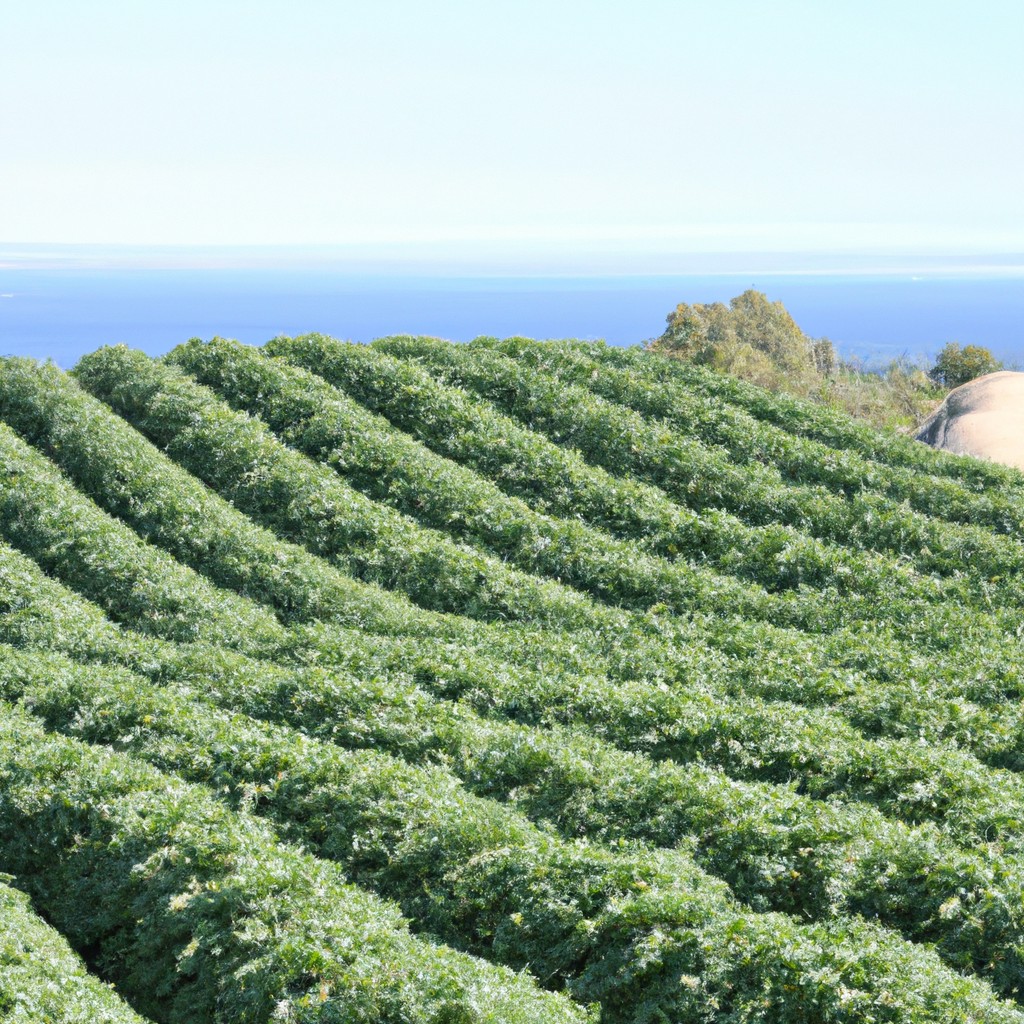In this article, you will learn about the various agricultural practices and challenges in California.
Look Inside:
Overview of Major Crops in California

California’s agricultural landscape is as diverse as its climate, with a variety of crops thriving across the state. Almonds, grapes, and strawberries lead as some of the top commodities, not just in volume but also in economic impact. These crops benefit significantly from the state’s Mediterranean climate, characterized by warm, dry summers and mild, wet winters.
Venturing further into the state’s agricultural variety, California is also the leading producer of dairy products and nuts in the U.S. This dominance in dairy aligns with the extensive cattle ranches and technologically advanced dairy farms scattered throughout the region.
Additionally, crops like lettuce and tomatoes are staples, anchoring the vegetable production sector. The fertile soils of the Central Valley play a crucial role here, providing ideal growing conditions that contribute to California’s status as a powerhouse in agricultural production.
By investing in a diversity of crops, California not only meets national demands but also strengthens its agricultural sector against market and climate fluctuations, showcasing its strategic approach to farming sustainably.
Water Resources and Irrigation Practices
California’s farming sector heavily relies on a sophisticated irrigation system to support its diverse range of crops, from almonds to lettuce. With limited rainfall, farmers turn to both surface water and groundwater to meet their needs. The state’s primary sources include reservoirs, which capture and store winter rains, and aquifers, accessed through wells.
To manage these water supplies effectively, many farmers have adopted advanced irrigation techniques. Drip irrigation, which delivers water directly to the roots of plants, minimizes waste and maximizes efficiency. Similarly, computer-controlled irrigation systems allow precise water application based on real-time data, helping to conserve this critical resource.
Facing periodic droughts, California’s agricultural community continues to innovate in water management, exploring new methods to sustain productivity while reducing environmental impact. These practices not only aid in preserving vital water resources but also support the thriving agricultural economy of the state.
Impact of Climate Change On Farming
Climate change poses substantial challenges for farmers throughout California. Rising temperatures and unpredictable weather patterns make growing seasons less predictable and increase pests and diseases, which can devastate crops.
Water scarcity is another critical issue, as reduced snowpack and erratic rainfall patterns strain the already limited water supplies necessary for irrigation. Farmers are adapting by implementing more water-efficient technologies and crop varieties but face ongoing uncertainty.
Additionally, the increasing frequency of extreme weather events, such as wildfires and heatwaves, directly impacts agricultural productivity and food security. These events not only damage crops but also disrupt the supply chains that are vital for agricultural economics.
To mitigate these impacts, efforts are being made to invest in research and the development of new farming practices that are resilient to the stresses of climate change.
Sustainable Water Management Strategies
Water management in California has evolved significantly, especially with the pressing need to adapt to reduced rainfall and increased demand. Farmers are implementing various innovative practices to use water more efficiently and sustainably.
One notable strategy is the use of drip irrigation systems that deliver water directly to the roots of plants. This method minimizes waste and reduces evaporation compared to traditional techniques like flood irrigation.
Another approach involves the collection and reuse of agricultural runoff. By capturing water that would otherwise be lost, farms can recycle it for multiple purposes, including irrigation and livestock.
Additionally, some farmers are adopting weather-based irrigation controllers that adjust watering schedules based on real-time climate conditions. This technology ensures that crops receive moisture exactly when needed, thereby conserving significant water resources.
Lastly, soil moisture sensors are becoming commonplace. These devices provide precise data on ground water levels, enabling farmers to irrigate only when the soil requires moisture, preventing unnecessary water use.
Together, these strategies are pivotal in promoting water conservation, helping California’s agriculture remain productive and sustainable despite environmental challenges.
Future Trends in California Agriculture
As technology and environmental awareness advance, so too does the agricultural scene in California. Precision agriculture will become more prevalent, utilizing drones and IoT devices for real-time field monitoring, leading to more efficient crop management and reduced resource usage.
Plant-based protein sources are gaining traction due to increased consumer health consciousness and environmental concerns. This shift inspires a new wave of crop types being cultivated, potentially including more legumes and nuts.
Vertical farming is another growing trend, with several startups already experimenting with hydroponics and aeroponics systems. These technologies allow for multi-layer cultivation, significantly boosting productivity per square foot and conserving water.
Genetic editing and CRISPR technology will also play a key role in developing crops that are more resistant to pests and disease, reducing the need for chemical pesticides and increasing yield.
Lastly, the integration of blockchain technology is expected to improve traceability and transparency in the supply chain, ensuring consumers can verify the sustainability and safety of their food products. This is particularly crucial in a time when farm-to-table and organic products are in high demand.




